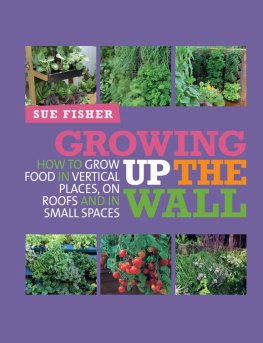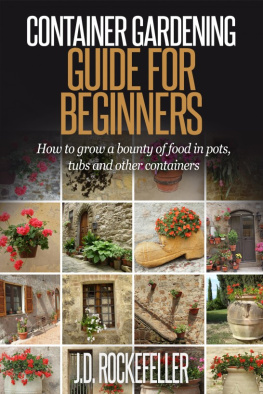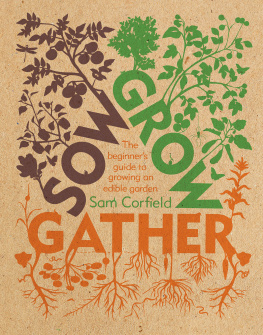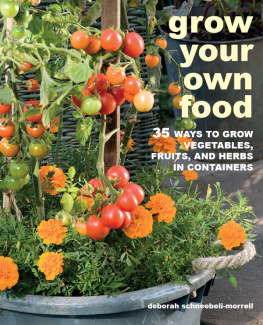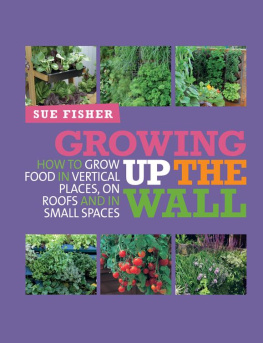Fisher - Growing Up the Wall
Here you can read online Fisher - Growing Up the Wall full text of the book (entire story) in english for free. Download pdf and epub, get meaning, cover and reviews about this ebook. year: 2014;2013, publisher: UIT Cambridge Ltd., genre: Children. Description of the work, (preface) as well as reviews are available. Best literature library LitArk.com created for fans of good reading and offers a wide selection of genres:
Romance novel
Science fiction
Adventure
Detective
Science
History
Home and family
Prose
Art
Politics
Computer
Non-fiction
Religion
Business
Children
Humor
Choose a favorite category and find really read worthwhile books. Enjoy immersion in the world of imagination, feel the emotions of the characters or learn something new for yourself, make an fascinating discovery.
Growing Up the Wall: summary, description and annotation
We offer to read an annotation, description, summary or preface (depends on what the author of the book "Growing Up the Wall" wrote himself). If you haven't found the necessary information about the book — write in the comments, we will try to find it.
Growing Up the Wall — read online for free the complete book (whole text) full work
Below is the text of the book, divided by pages. System saving the place of the last page read, allows you to conveniently read the book "Growing Up the Wall" online for free, without having to search again every time where you left off. Put a bookmark, and you can go to the page where you finished reading at any time.
Font size:
Interval:
Bookmark:

To my family: for their support and for helping with weird and wonderful projects, not to mention eating all manner of edibles without too many complaints.
Producing a book is very much a team effort: many thanks to everyone at Green Books for their expertise, support and enthusiasm, and to the many inspiring individuals, groups and companies who have helped with information and images. Of course thanks to my family; especially my Mum, who first inspired my love of plants and gardening.

In cities and towns right around the world, gardens are, quite literally, growing up. In just a few years, it has become no longer a novelty to see tall buildings transformed from urban desert into habitat heaven, with the built environment beautified by walls or roofs clothed with a fabulous array of plants. Thanks to new technology, spaces that were previously plant-free zones can now be adapted into thriving, beneficial and beautiful growing areas, with plants in places where we never even realised there were places. This approach to growing offers something for everyone while we may marvel at the Singapore Sky Garden or the botanical and artistic masterpiece living walls in Paris, Madrid and London by living wall pioneer Patrick Blanc, there are also many options available on a more homely scale.
So far the main trend for living walls and green roofs has been as ornamental features, along with the much-touted benefit of boosting biodiversity. But now the creation of these features is starting to meld with the massive upsurge of interest in growing edible plants. For the first time in our history, more than half the worlds population live in cities. Outdoor space is more precious than ever before. Ground space for private gardens is at a premium and it goes without saying that many urban dwellers have no garden at all. Alongside this has come a quiet global revolution a vastly increased awareness of the food we eat, where it comes from, and the environmental costs of raising crops, including the impact of food miles involved in transporting our food to shops and supermarkets. Added to this is the increasing human detachment from nature, held by some to be a strong contributing factor to antisocial behaviour, vandalism and violence, and issues such as climate change and hunger not just the 1 billion hungry people in the world but also the global challenge of a poor diet. All these factors are encouraging countless individuals, schools, community groups and many others to look at ways of addressing these issues by growing even a small proportion of the food they eat.
In 2010 vegetable seeds outsold flowers for the first time ever in the UK as gardeners realised just how good it is to grow their own. If proof of popularity were needed, look to that apogee of garden fashion, the Chelsea Flower Show. The 2011 show was literally dominated by edibles, with the B&Q 9m (30') high vertical allotment towering over other exhibits and winning a coveted gold medal. And Diarmuid Gavins Irish Sky Garden showed that plants could grow literally anywhere, even swinging high in the sky from a hanging pod. Food-growing schemes are springing up around the world, including hundreds of community-supported agriculture (CSA) projects that involve thousands of volunteers. Many projects are aimed at making the most of tiny or previously ungardened spots, such as the Edible Bus Stop project around Londons bus network and Incredible Edible, which began in Todmorden and is now spreading to other towns in the UK.
On an individual level, many edible plants can be grown in the smallest of spaces. For those worried about sacrificing good looks for edibility, fear not. Many new veg and fruit varieties are very attractive, and having plants conveniently close means youre much more likely to grab a salad for lunch, or pep up a dish with a handful of garden-fresh herbs most of which look gorgeous too. Add edible flowers into the mix and suddenly a whole world of bright colour opens up.
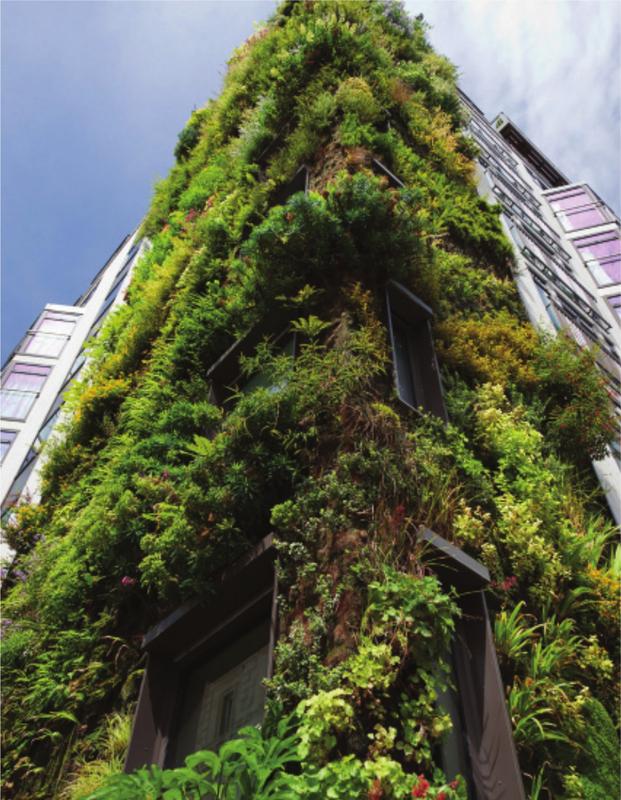
The Athenaeum Hotel, Mayfair, boasts a vertical garden designed by Patrick Blanc.

B&Qs Vertical Allotment at the 2011 Chelsea Flower Show.
Growing crops on the vertical and on roofs is a fantastic solution for space-hungry individuals, groups and communities. Whether youre an apartment-dweller with a wall, windowsill, balcony or small flat roof at your disposal, a school with nothing but a tarmac playground, or a group with just a paved courtyard in your community centre, this book is for you. Even if you have a garden already, there are benefits to be gained from growing crops in the wonderfully beneficial microclimate of a sheltered wall or fence. The rewards are many: delighting the taste buds with fresh, still sun-warmed tomatoes or strawberries, and the joy of harvesting ones own crops without any food miles whatsoever. Perhaps most of all, the sheer deep-down satisfaction of not just growing plants in hitherto impossible spots, bringing nature back into stark and bare places, but beauty with a practical purpose.
While living walls are a recent development, conceived as a combination of new technology and increased pressure on outdoor space, the concept of green roofs has actually been around for thousands of years. Traditional homes in parts of the world that experience bitterly cold winters, such as Scandinavia and Iceland, often had thick turf roofs because of their excellent insulating properties, as well as ease of maintenance. The Hanging Gardens of Babylon, built around 600 BC , was the first recorded green roof garden, the great arcaded structure built with ascending terraces, roofed with bundles of reeds, layers of brick tiles and thick sheets of lead to waterproof the rooms below.
Creating growing spaces on the vertical using hanging baskets, window boxes and balcony gardens is a technique that has been in use for centuries. However, the concept of extending growing areas over the whole roof or wall, although relatively new, is edging nearer the centre of mainstream gardening. The relentless increase in population and urban growth, coupled with increased environmental awareness and the threat of climate change, has inspired a real sea change in the approach to buildings and development. Vertical and roof growing is made possible with modern materials such as highly efficient waterproofing membranes, irrigation systems and lightweight growing media, to enable the greening of buildings on a grand scale. And while government policies vary around the world, of course, the change in attitudes that can be seen in many countries is immensely heartening.
To give just a few examples: in the UK, living (green) roofs and walls such as those at the O2 Arena, several shopping centres and the South Downs water treatment centre, have become major features of prominent new developments, both public and commercial, and are often a major consideration in allowing planning permission to be granted. Some states in North America, and some Canadian cities, offer tax incentives and subsidies for these features. In cities such as Copenhagen and several in Switzerland, it is now law for all roofs from flat up to a 30-degree slope to be planted. While in the main it is these large-scale commercial developments that grab the headlines, there are many inspirational small-scale features benefiting from spin-offs of the same technology. And, while commercial projects are bound to an exceptionally high standard in terms of quality of materials, on a domestic scale there is more scope for experimentation and DIY with simple, affordable projects using both new and recycled materials.
Font size:
Interval:
Bookmark:
Similar books «Growing Up the Wall»
Look at similar books to Growing Up the Wall. We have selected literature similar in name and meaning in the hope of providing readers with more options to find new, interesting, not yet read works.
Discussion, reviews of the book Growing Up the Wall and just readers' own opinions. Leave your comments, write what you think about the work, its meaning or the main characters. Specify what exactly you liked and what you didn't like, and why you think so.

